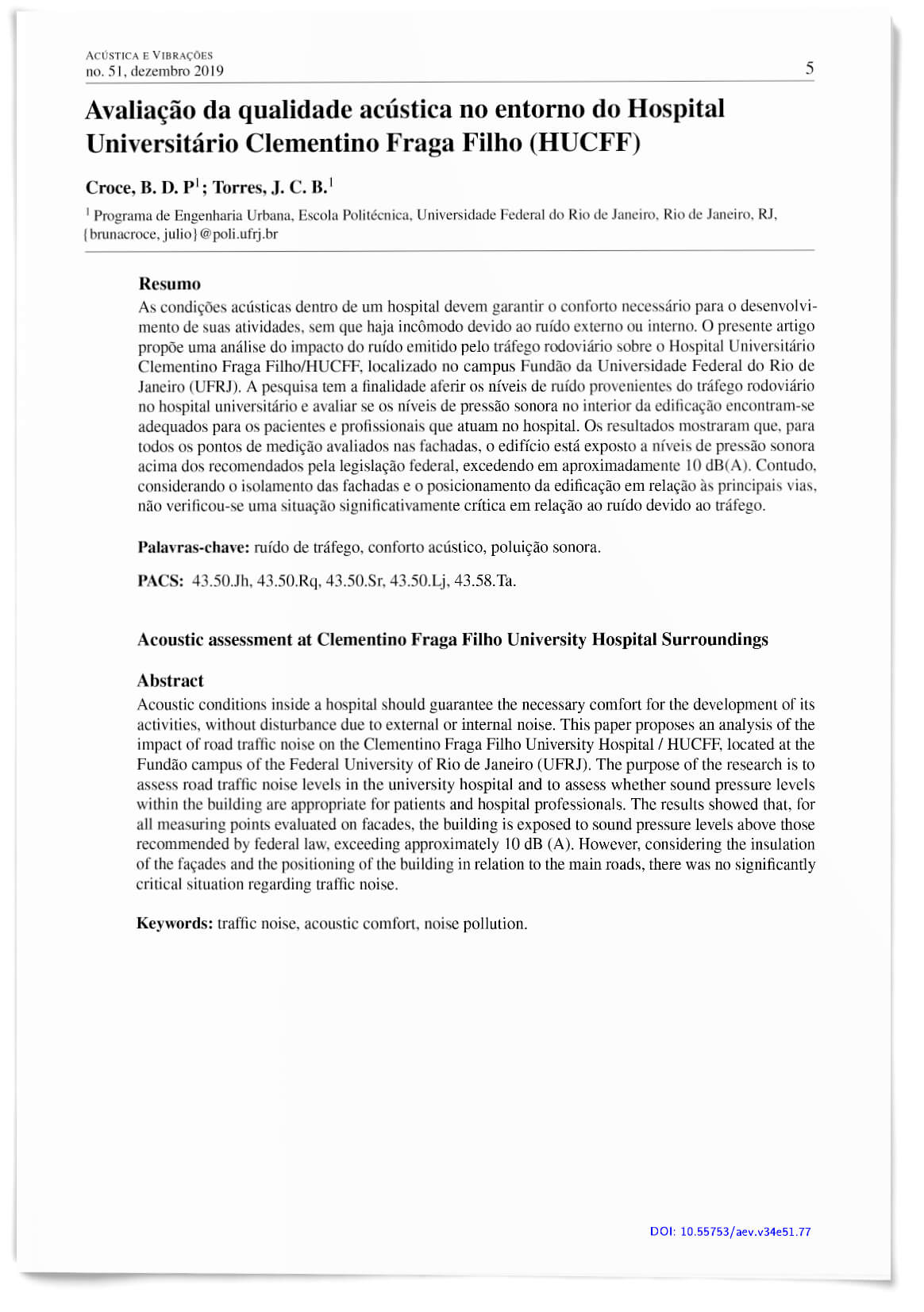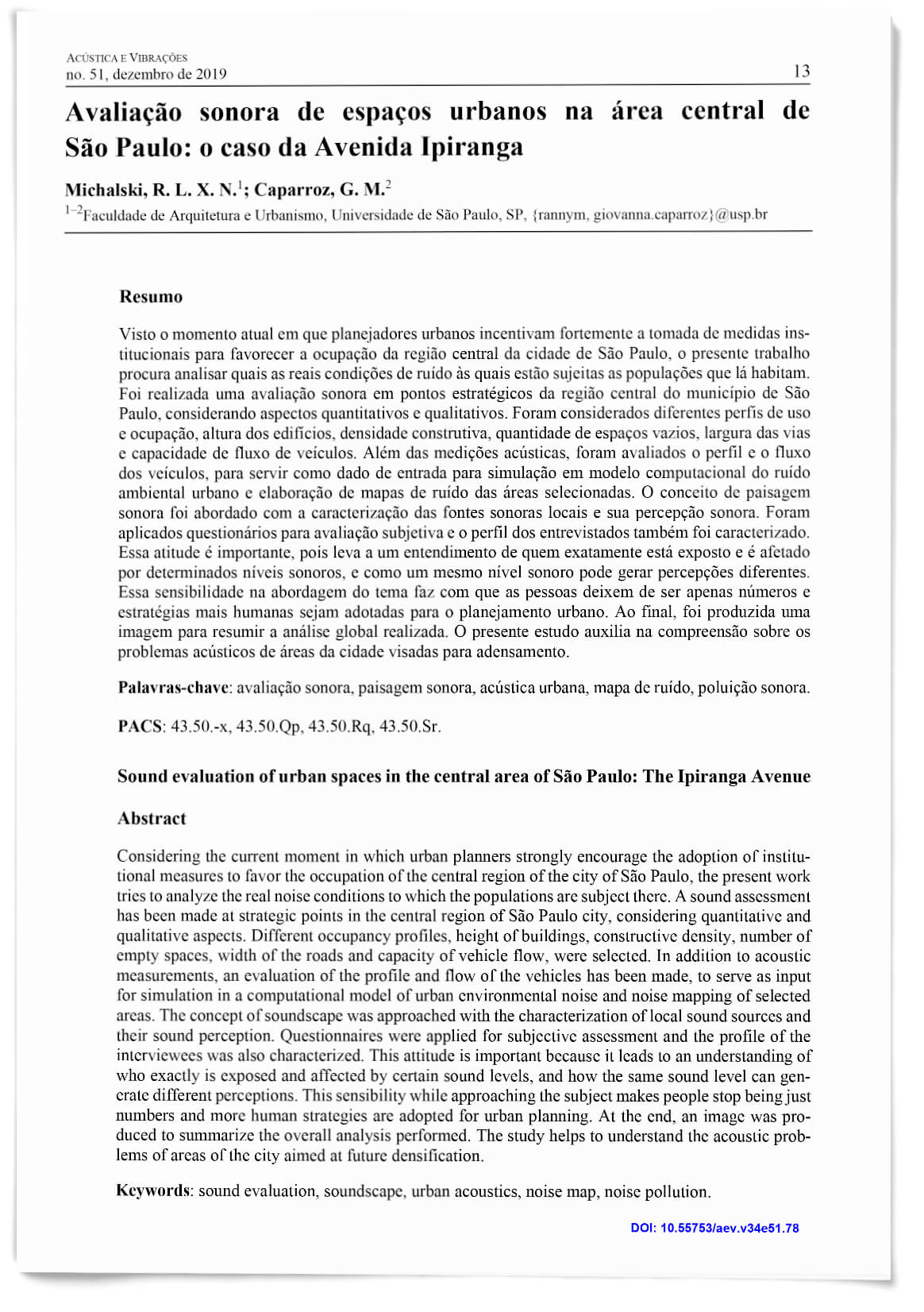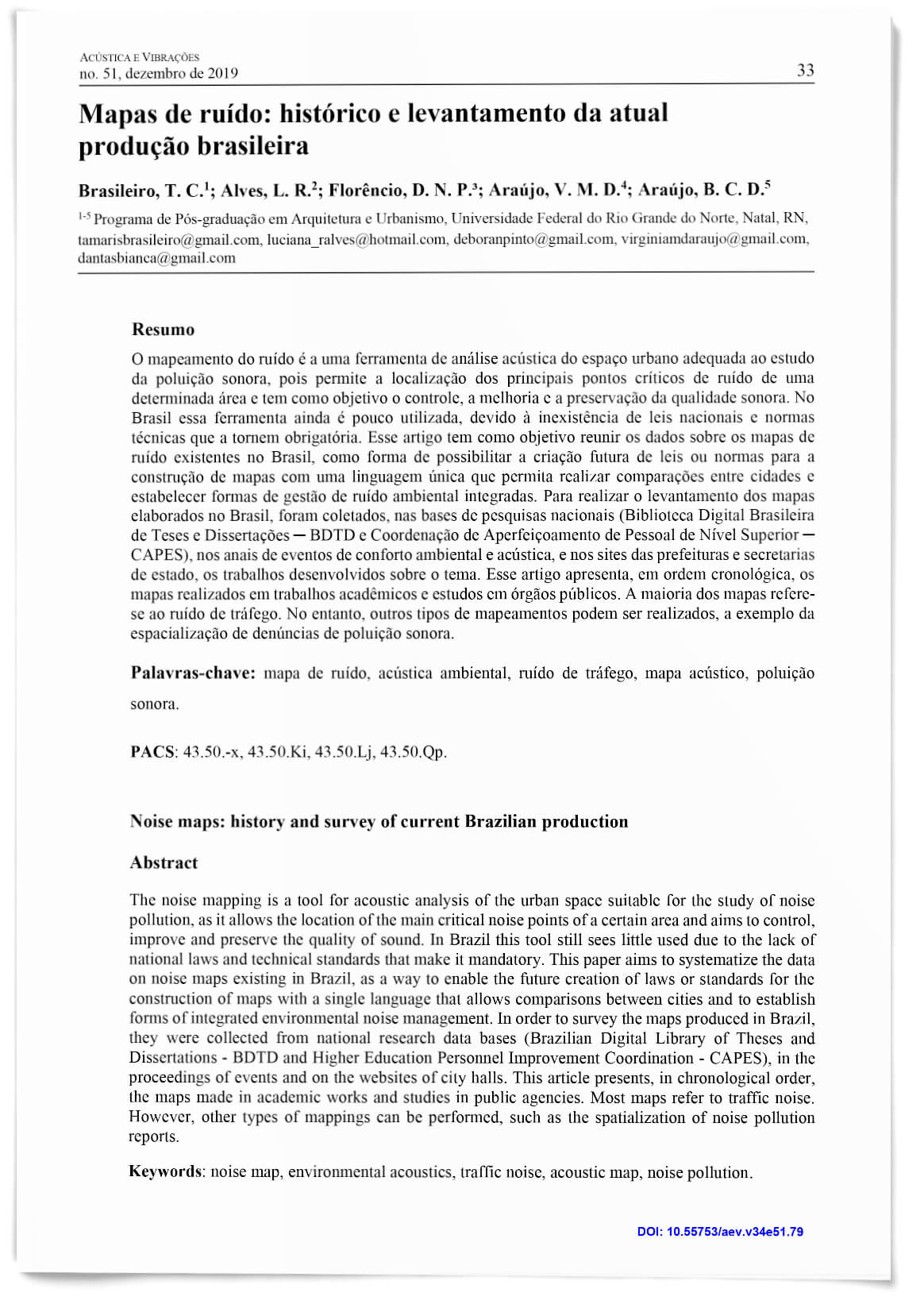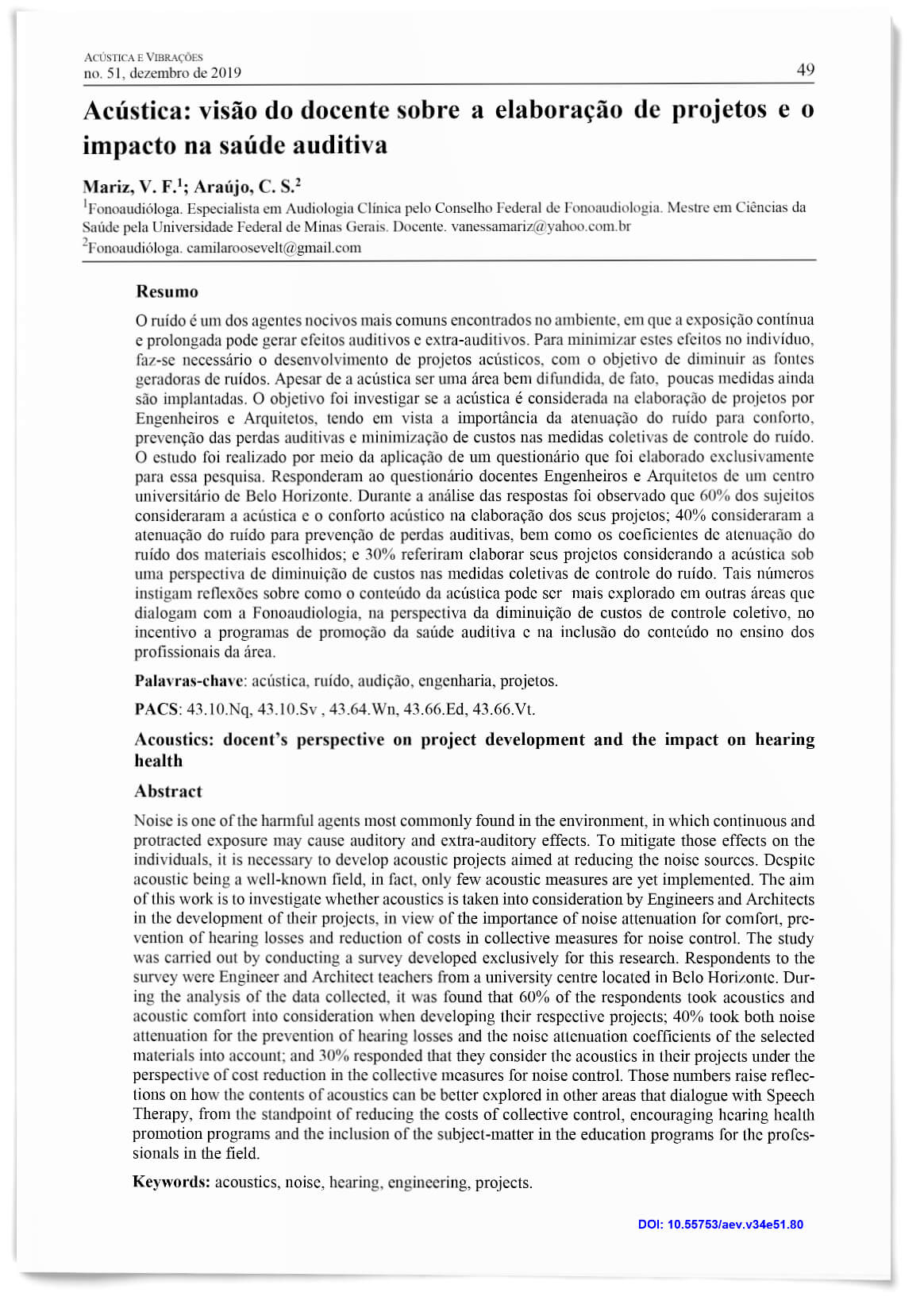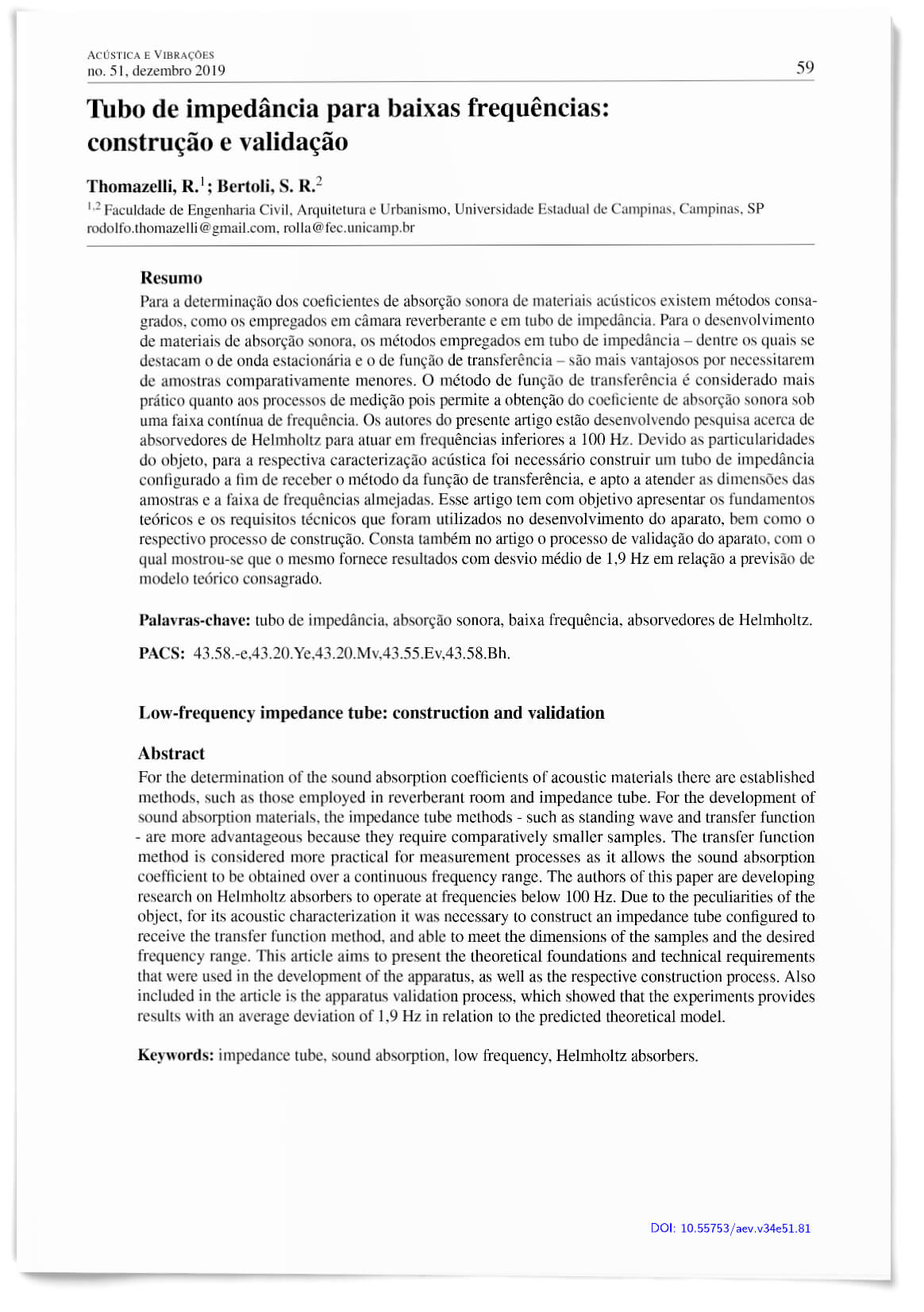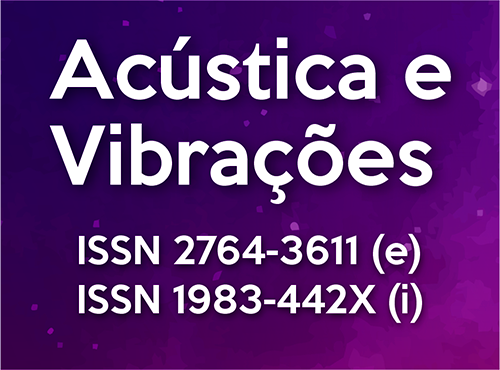Vol. 34 No. 51 (2019): Acústica e Vibrações 51

Editorial
Dear Acoustics and Vibrations reader, it is with great pleasure that we bring you this copy. This edition has a free version, which contains only the first page of each article, in order to provide more support so that those not yet associated with Sobrac can evaluate one of the advantages of subscribing (see details on how to become a member in the section ).
Here we have five articles, starting with the work of Bruna Croce and Júlio Torres from UFRJ, which addresses a relevant topic related to the problem of noise in hospitals. In addition to the methodology used in the evaluation, there is a discussion that will certainly be taken forward by our community, related to the maximum levels allowed by the ABNT 10151 standard.
The article by Ranny Michalsky and Giovanna Caparroz (FAU/USP) describes the production of a noise map of a region in downtown São Paulo, seeking to relate it to the population's impressions of the local soundscape. One of the interesting points is the beginning of a more humanized discussion about the problem of urban noise, whose perception also depends on other senses, in addition to hearing.
The researchers from UFRN, Tamiris, Luciana, Débora, Virgínia and Bianca, who signed the third article, bring us an interesting compendium of noise maps already made in Brazil and discuss other sources of information that could generate geo-referenced data. In this article, some maps of complaints about noise pollution are also presented.
Vanessa Mariz and Camila Araújo, from UFMG, carried out a study with engineers and architects, all professors, to quantify the concern with acoustics in their projects. According to their results, there is a concern in about 60% of the population studied. Such a study should encourage us to promote and intensify awareness campaigns.
Closing the scientific articles section, Rodolfo Thomazelli and Stelamaris Bertoli, from FEC/Unicamp, present us in detail the design, construction and evaluation of a specific impedance tube for sound impedance measurements at low frequencies, as required when evaluating Helmholtz resonators.
In addition to scientific articles, in the Calls section, the reader will find a text by our Editor-in-Chief, encouraging publications in the journal Acústica e Vibrações. Be sure to read and check the types of articles accepted for publication, as well as some suggestions on topics to be addressed.
We could not fail to highlight here the texts on two world actions, with their respective
coordinations in Brazil, to raise awareness of issues related to sound: INAD and the Year
Sound International. Check out the details and get involved in these campaigns, whose success depends on our performance!
Several calls for scientific events on acoustics and vibrations that will take place in the years 2020 and 2021 are presented towards the end of this edition of ours, with emphasis on the XII Iberoamerican Congress of Acoustics (FIA) and XXIX Sobrac Meeting that will be held jointly in 2020, at the paradise Florianopolis. In addition to the opportunity to exchange experiences and knowledge, the event reminds us of the first edition of the FIA, which took place in the same city in 1998.
In order to achieve an increasing quality and visibility, in addition to the authors, we publish here a special and nominal thanks to the referees and reviewers who dedicated themselves to reading and criticizing the submitted articles. We remind you here that, even when an article is not accepted, the opinion fulfills a function of knowledge construction and serves to "tune" our speeches.
To close this issue, we have another novelty, the new section called News & Reviews, with three very interesting mini technical articles. One of them on the construction of a computational model and simulation of Theatro Treze de Maio, in Santa Maria (RS), by Caroline Gaudeoso and William Fonseca (UFSM). Carolina, Marcel, Marcos and Paola bring us the description of a critical listening room built in the company Harmonia, according to national and international standards. Finally, Rémi Guastavino (adapted by Rose Esteves and William Fonseca) presents us with a description of the new artificial head from Brüel & Kjaer with a construction that reproduces characteristics of the auditory system and the human phonatory system, for the most diverse purposes, such as development in the fields of communication and entertainment.
Thank you very much and a great read!
Sincerely,
Prof. Dr. William D'Andrea Fonseca
Prof. Dr. Marcio Henrique de Avelar Gomes
Summary content:
- Evaluation of the Acoustic Quality in the Surroundings of the Clementino Fraga Filho University Hospital (HUCFF);
- Sound evaluation of urban spaces in the central area of São Paulo: the case of Avenida Ipiranga;
- Sound Maps: history and survey of current Brazilian production;
- Acoustics: the professor's view on project development and the impact on hearing health;
- Low frequency impedance tube: construction and validation; and
- Calls & News and Reviews.

